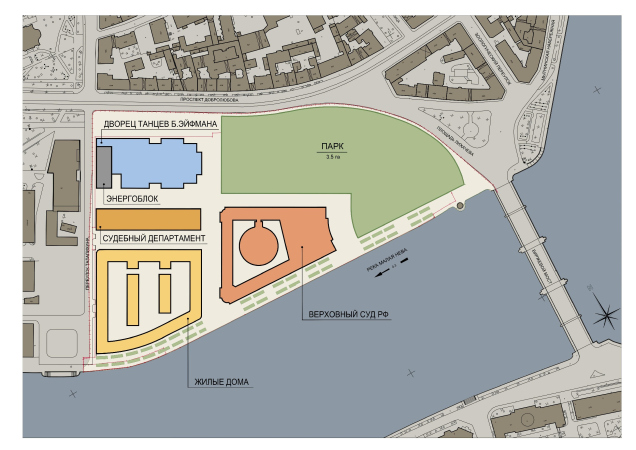Evgeny Gerasimov: “On the Vatny Island, the Judicial Quarter and a park can peacefully coexist”
The proposal made by the architect of the Judicial Quarter: instead of moving it over to the Neva Garden, keep it in the old place, at the same time curtailing and streamlining it. The park will still get 5.5 hectares of land.








































